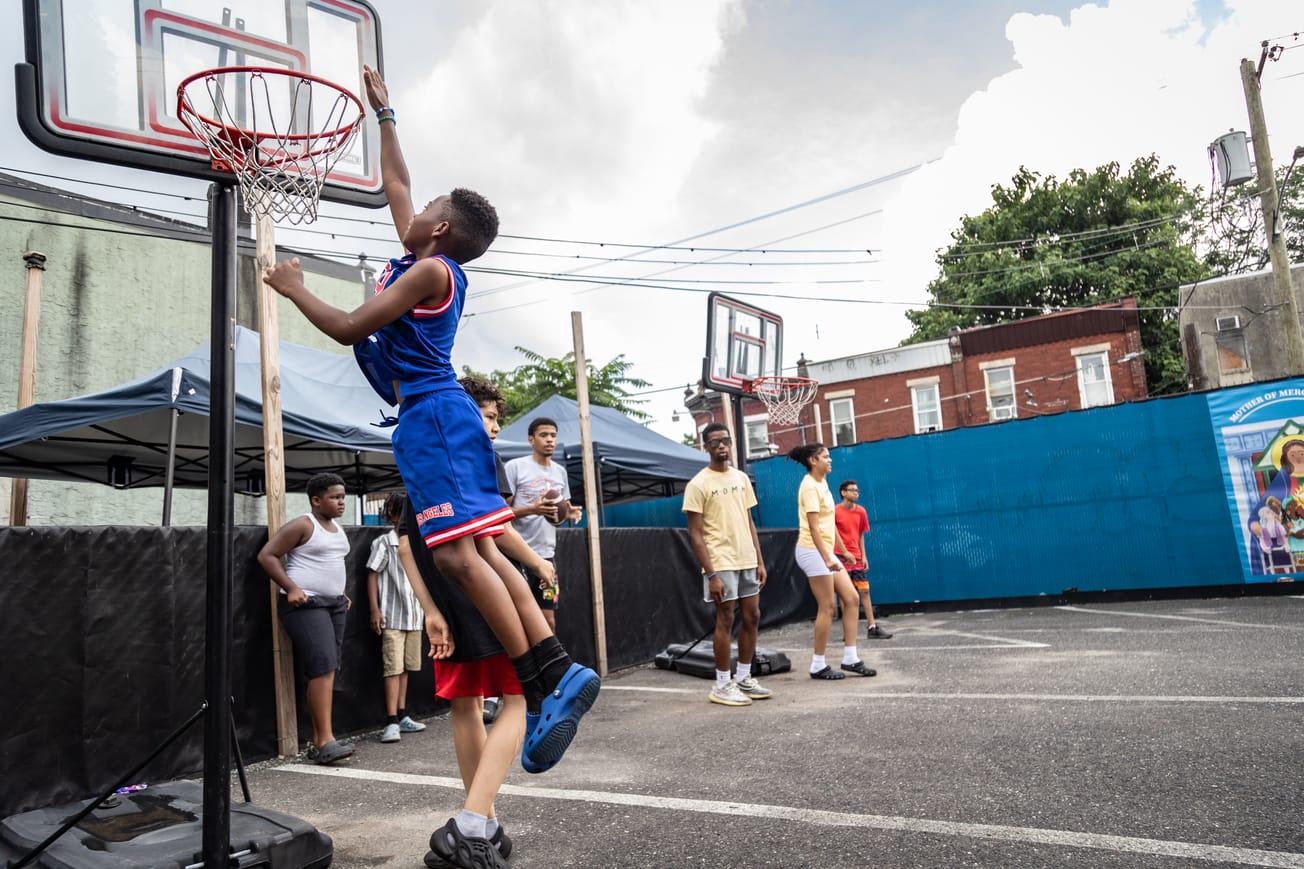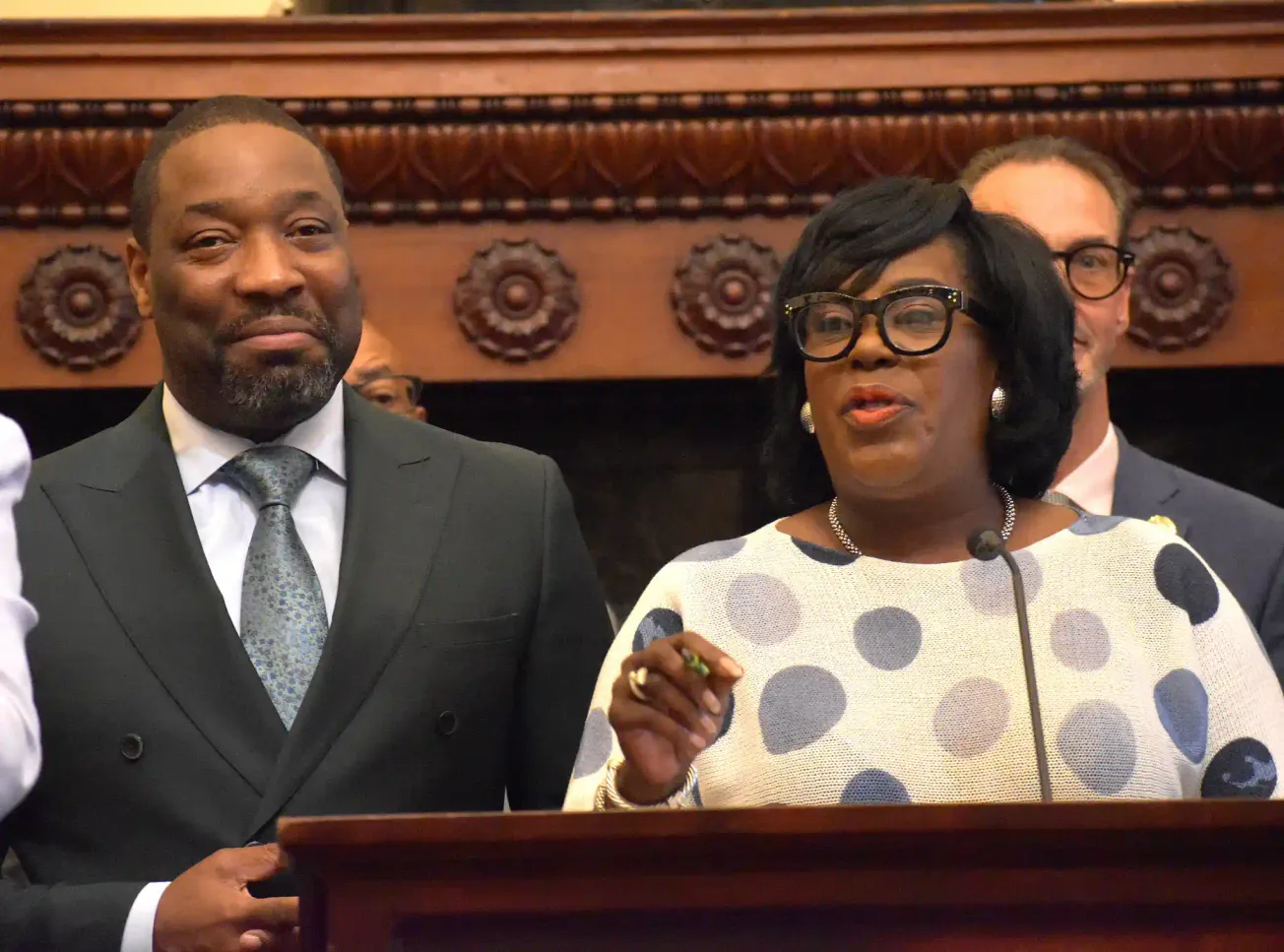Students across Philadelphia started adjusting to a “new normal” last week, when they entered an all-digital marking period. While the transition poses challenges for teachers, students, and parents alike, it creates unique challenges for students with learning disabilities.
“Online learning has never really been proven effective for students with disabilities,” said Meghan Whittaker, the director of policy and advocacy at the National Center for Learning Disabilities (NCLD). “We still have a lot of work to do to figure out what practices are effective.”
Learning disabilities fall under the category of learning and attention issues, which include a range of disabilities and disorders like dyslexia, dyscalculia, attention deficit hyperactivity disorder (ADHD), and executive functioning issues. These disabilities and disorders affect one in five children in the United States, often impacting a student’s ability to focus or process information.
In a physical classroom, students with learning disabilities may already struggle to keep up with their peers. Digital learning has the potential to widen educational gaps for students with learning disabilities by decreasing time for one-on-one interactions, limiting an educator’s ability to sense if a student is struggling, making it difficult to properly evaluate a student for a learning disability, putting pressure on parents to act as teachers, and favoring students from wealthier districts or homes.
If not done properly, experts fear that virtual schooling will create new barriers to success and exacerbate pre-existing inequalities in the education system.
“My concern is that those students who were doing okay before the pandemic hit . . . they’re going to continue to be okay,” Whittaker said. “But then you have students who are already at the margins, who were already falling behind, who maybe don’t have parents who are able to support their learning . . . or you may have students who weren’t in poverty but now are because of this pandemic. . . . It’s not going to take much for those students to fall further behind.”
A Digital divide
Many students did fall behind this spring, Whittaker said, as millions of children across the country were unable to connect to their schools because they didn’t have access to the internet at home before the pandemic.
When Philadelphia school buildings closed in mid-March due to staff shortages from coronavirus cases in surrounding counties, the School District of Philadelphia initially told teachers not to offer online instruction since not all students would be able to connect to the internet, but the school district overturned this rule a day later. Shortly after, the district announced their plan to implement digital learning and provide free Chromebooks and Wi-Fi hotspots to students.
Read more: The School District of Philadelphia announces virtual supports for students and families
However, the school district distributed the Chromebooks about three weeks after the city’s initial closure of schools, which put Philadelphia public schools behind some private and suburban schools whose students received laptops or tablets before being sent home.
And access to technology wasn’t the only thing delayed this spring. For students with learning disabilities, evaluations for an Individualized Education Plan (IEP), which is a federally mandated learning plan given to students with learning disabilities, were also put on hold.
Delayed evaluations result in some students not getting the help they need
NCLD research shows that — even in a face-to-face learning environment — students with learning disabilities are widely undiagnosed, meaning they are cut off from an educational approach that suits their needs.
According to the Individuals with Disabilities Education Act (IDEA), a free, appropriate public education (FAPE) often includes an IEP. Evaluations for IEPs are also federally mandated, if requested by a parent or teacher, and must be conducted within 60 calendar days of receiving parental consent.
These laws didn’t change when schools transitioned to digital learning. What did change, however, was how evaluations were implemented.
In the spring, the School District of Philadelphia suspended in-person IEP evaluations and reevaluations due to guidance from the Pennsylvania Department of Education (PDE), Monica Lewis, school district spokesperson, wrote in an email to Kensington Voice.
The Pennsylvania guidance states that due to COVID-19, local education agencies and Preschool Early Intervention programs may not be able to provide the same type of services as they used to for students with learning disabilities. It adds that when evaluating a student for a specific learning disability, direct observation is necessary, which can only be conducted face-to-face. As a result, the state directed schools to postpone evaluations until they re-opened. Remote evaluations may take place if they do not have a required face-to-face component and if a parent or guardian consents, according to state guidance.
Marguerite Ruff, a special education classroom assistant at John Marshall School in the Frankford neighborhood of Philadelphia, said she had doubts about how effective IEP evaluations would be in a virtual setting.
“It would be hard to do because you have to be there in [the student’s] presence, redirecting them, and getting their attention, and you hope that their parent or [whomever] isn’t there giving them answers,” Ruff said. “The accuracy would be hard, virtual.”
Beth Lopez, the bilingual parent advisor for HUNE, a Kensington-based organization that works to improve educational outcomes for children and youth with disabilities across the city, said she thinks that some forms of virtual meetings besides evaluations can be effective for students with learning disabilities.
This August, Lopez conducted her first Zoom meeting with an IEP team to help a parent advocate for more support for their child, and it was a success, she said.
Still, Lopez said she agrees with the state’s and city’s decision to suspend in-person IEP evaluations.
“At this point, right now, it’s safety first,” Lopez said “When you’re doing an in-person evaluation, it’s up close . . . You potentially put a lot of people at risk. You’re putting the child at risk, not as much, but the child’s parents, the child’s grandparents because we have all kinds of multi-generational families, and then also multiple teachers.”

Checking in through the screen
In Philadelphia, some portions of reevaluations could be completed virtually, which consisted of phone calls or digital conferences with parents and reviews of student records and observations conducted prior to the onset of the pandemic, Lewis wrote.
Without face-to-face interactions at school, educators may be unable to notice if a student is struggling online because of a learning disability.
“They can’t really pick up on student cues; they may not have a good sense of who’s keeping up and who’s not; they may not be able to as effectively differentiate their instruction for students who might be at different places in their learning,” Whittaker said. “All of that adds to the challenge for students with learning disabilities who really rely on that interaction with teachers.”
Further, many schools rely on a response to intervention (RTI) model to help measure students’ skills and determine what learning supports they may need. This model works on certain assumptions, including that all students in a designated school are receiving the same quality of education, that those who fall behind are given additional support, and that data is tracked and used to determine the success of those supports.
But response to intervention doesn’t always work in school districts — or poorly structured digital classrooms — where students are already behind. In these environments, it can be hard to differentiate if a student is struggling from a learning disability or another factor, like poor instruction, Whittaker said.
For Ruff, who works primarily with students with autism spectrum disorders, continuing to teach her students domestic and behavioral skills is more difficult to do through a screen.
“Virtual is hard,” Ruff said. “You can’t make them really pay attention if they really don’t want to because you’re not there in their space, their presence.”
“As far as implementing the IEPs, it will be harder,” Ruff added. “With our guys, we try to get them to improve on their way of life — domestic-like cleaning and taking care of themselves — and that’s kind of hard when we’re virtual. A lot of things are hands on, and you can’t do that because you’re not hands on.”
Disparities in funding of public schools could widen educational gaps
Dylan Davis, a former Philadelphia public school teacher and current leader of NCLD’s Parent Advisory Council in Pennsylvania, has seen the impact that more resources can have in schools.
Davis taught at Benjamin Franklin High School and Strawberry Mansion High School between 2005 and 2008. He remembers buying his own supplies, like printer paper and pencils, because the school did not always have those resources available, he said.
“You don’t see that in the suburban districts; you don’t see that in the schools that have resources,” Davis said. “So that made it harder on the teacher and it made it a lot harder on the kids. They’re already one strike down.”
In the 2019 National Assessment of Education Progress (NAEP) report, also known as The Nation’s Report Card, fourth graders in the School District of Philadelphia tested below the average score for large cities across the United States. When specifically looking at reading scores, fourth graders, on average, tested below the NAEP basic level, and students with disabilities scored significantly lower than those without disabilities.
Davis and his family now live in Swarthmore, Pa., and his daughter, who has dyslexia, attends Delaware Valley Friends School, a private school for students with learning disabilities in Paoli, Pa.
According to Davis, Delaware Valley Friends School’s virtual spring semester was a success, largely due to small class sizes and more funding. His daughter’s virtual classrooms consisted of about six to ten students with one-on-one check-ins woven in throughout the day, he said.
Davis’ daughter’s virtual classroom is a stark contrast from his son’s digital learning experience at Swarthmore-Rutledge School, a public elementary school in the Wallingford-Swarthmore School District, he added.
Similar to the School District of Philadelphia, Davis said that his son’s teachers have a lot more students to worry about, meaning that the burden of virtual teaching often falls on parents if they’re available and able to help.
Parents become the teachers
Shakela Strawberry, a working mother of three and member of NCLD’s Parent Advisory Council in Pennsylvania, has a son with a learning disability. Strawberry’s son goes to Stratford Friends School, a private school in Delaware County that caters to students with learning disabilities.
Strawberry’s son transferred to Stratford Friends after his Philadelphia charter school could not adequately support his learning disability. Federal law mandates that school districts provide free, appropriate public education for students with disabilities, so if a school is unable to provide for their needs, the district may need to fund the student’s education elsewhere.
Stratford Friends was able to provide for her son’s needs, Strawberry said, and his reading improved. But, now he’s at home.
Strawberry, who is a realtor, stepped into a parent-teacher role for all her children this spring. Since the pandemic hit, she’s worked partially from home while assisting her son and two daughters with schoolwork.
“A lot of people are talking about the kids; not a lot of people are talking about the parents,” Strawberry said. “A lot of parents were not and are still not informed of how best to help their child navigate through a technological system.”
Being naturally tech savvy, Strawberry set up Google Calendar alerts on her computer for when her children’s assignments were due and emailed teachers when she had questions of her own, she said. But when work calls, she is unable to be hands-on with her children’s education. And because her husband is an essential worker, her 16-year-old daughter is in charge when both parents are at work.
“Most parents aren’t able to sit next to their child and spend the day serving as that support system or the person giving them prompts and reminders,” Whittaker said. “[The student is] left to do their schooling on their own.”
According to Lopez, parent-teaching challenges can be worse for parents who do not speak English as their first language or parents who haven’t received higher education, Lopez said. Some of Lopez’s clients at HUNE, many of whom are Spanish speakers, do not have knowledge about the technology needed for online learning or access to information in their native language, she added.
“They’re worried,” Lopez said referring to the parents who have reached out to her. “They’re really frightened that they’re not able to log on and that their child is going to be called absent.”
Since the school year started last week, Lopez has received calls from parents who are struggling to navigate the digital platform and parents who are not able to get in contact with their schools. Lopez also reached out to schools on parents’ behalf, with no luck, she said.
“It’s hard to contact the schools, and I know schools are really trying,” Lopez said. “This is new for everybody. The villain here is the virus.”
Differentiating learning disabilities from pandemic-induced trauma
To complicate the issue more, pandemic-induced traumas can present similarly to learning disabilities in some students, making it hard to differentiate the best ways to meet each student’s needs.
NCLD’s guide to reopening schools states the following: “Special care and attention should be given to determining whether a student’s difficulties are due to a disability, rather than a consequence of lost instruction or trauma experienced during school closures.” Schools should be equipped to support either need, according to the NCLD.
“It’s not just students who struggle through this time, it’s families who’ve lost jobs or have experienced food insecurity or whatever else has been going on,” Whittaker said. “The first priority is addressing mental health and social emotional needs of students and families.”
In Philadelphia, the district is addressing the social and emotional needs of students, teachers, and families through a new initiative called Healing Together. The initiative targets four areas of need: social and emotional learning, mental health and trauma, relationships and community, and adult wellness. The district’s goal is to tackle problems that have arisen from social isolation during the pandemic as well as racial injustice.
The Centers for Disease Control and Prevention (CDC) provides its own guide for teens and young adults who may be dealing with emotional trauma caused by COVID-19, which discusses stress management and coping with suicidal thoughts.
Doing digital-learning the right way
With the right tools in place, experts say that digital learning can be successful. And for some Philadelphia teachers, it’s not a question of can, but how.
“The first step there is really ensuring that educators are equipped with the right kinds of instructional strategies so that they can work one-on-one, work effectively with students in a virtual setting,” Whittaker said. “The issue in the spring was that a lot of districts had to pivot really quickly and weren’t set up to do that.”
Digital learning is a new territory for many, so schools may need to invest in new programs for students with learning disabilities or new trainings for their teachers in order to make things work, Whittaker added.
For Ruff, the challenges that come along with doing special education virtually are worth enduring to protect the students and teachers’ health. Although she misses giving her students hugs and interacting with them in the classroom, Ruff said she still loves seeing her students, some of whom “light up” over the screen.
“You can see it, you can feel it.” Ruff said. “So, you’ve got to take what you can get for now. But, oh baby, when this is over!”
Editors: Zari Tarazona, Siani Colón / Designer: Henry Savage
What did you think about this story? Send a note to editors@kensingtonvoice.com, and we’ll consider publishing it in our Voices section. You can also tell us what you think in person at our neighborhood events.





